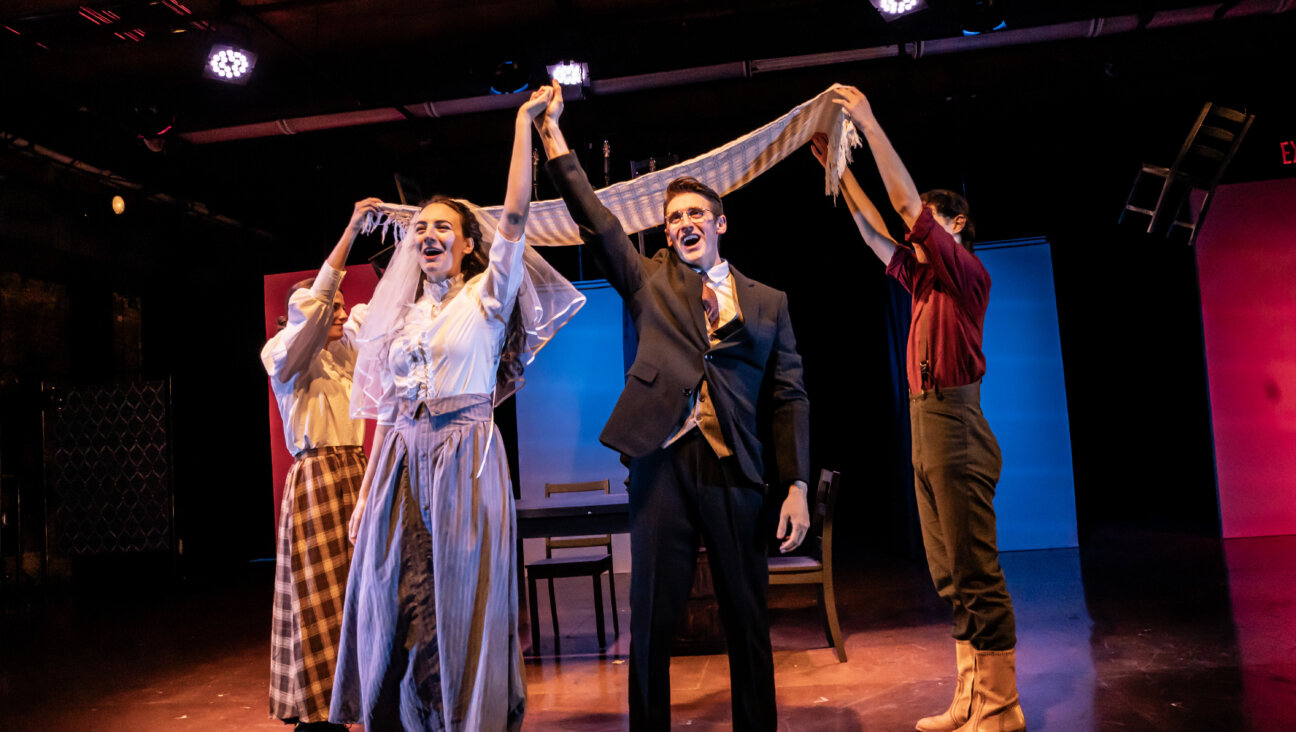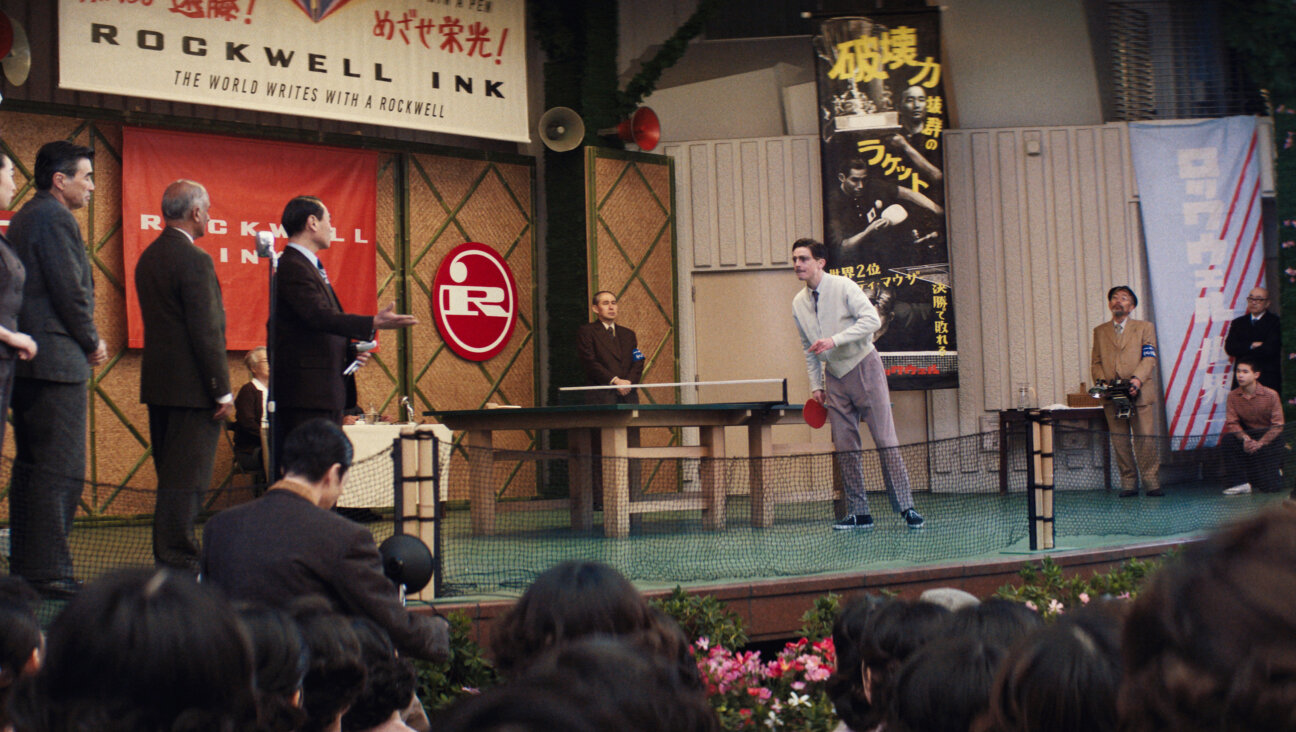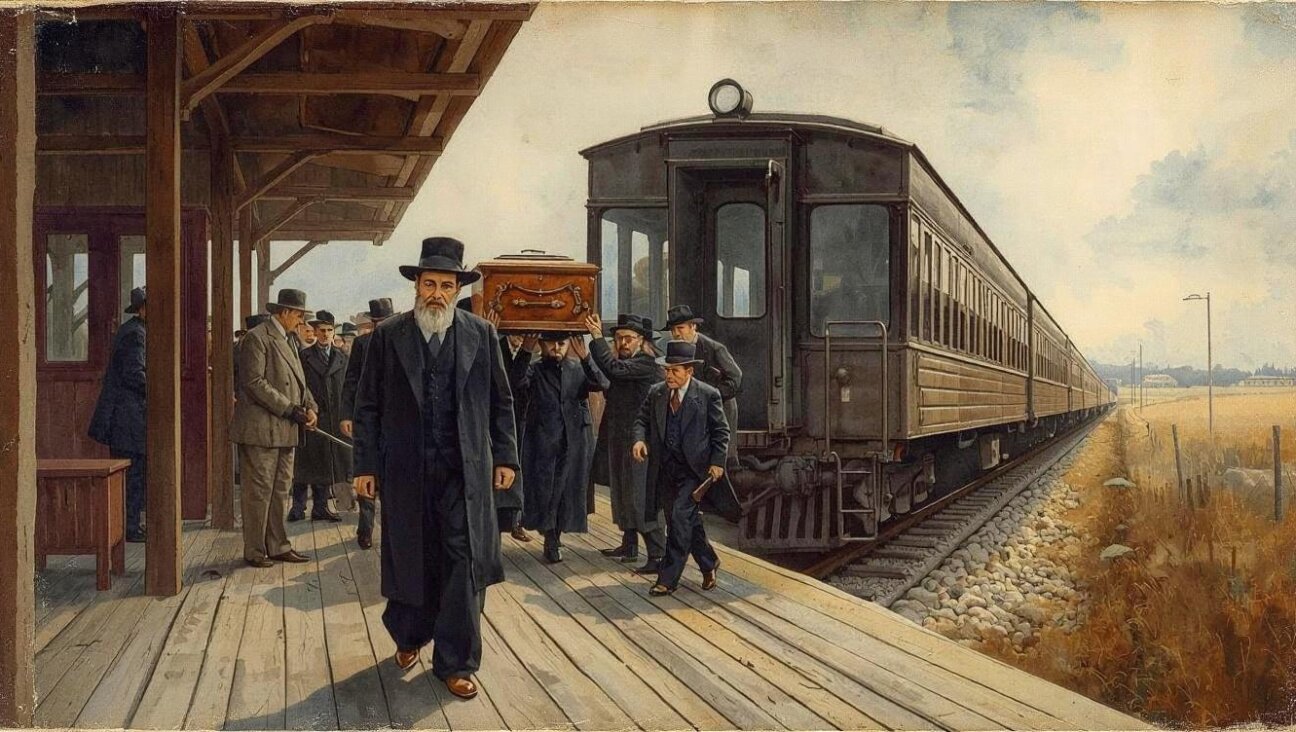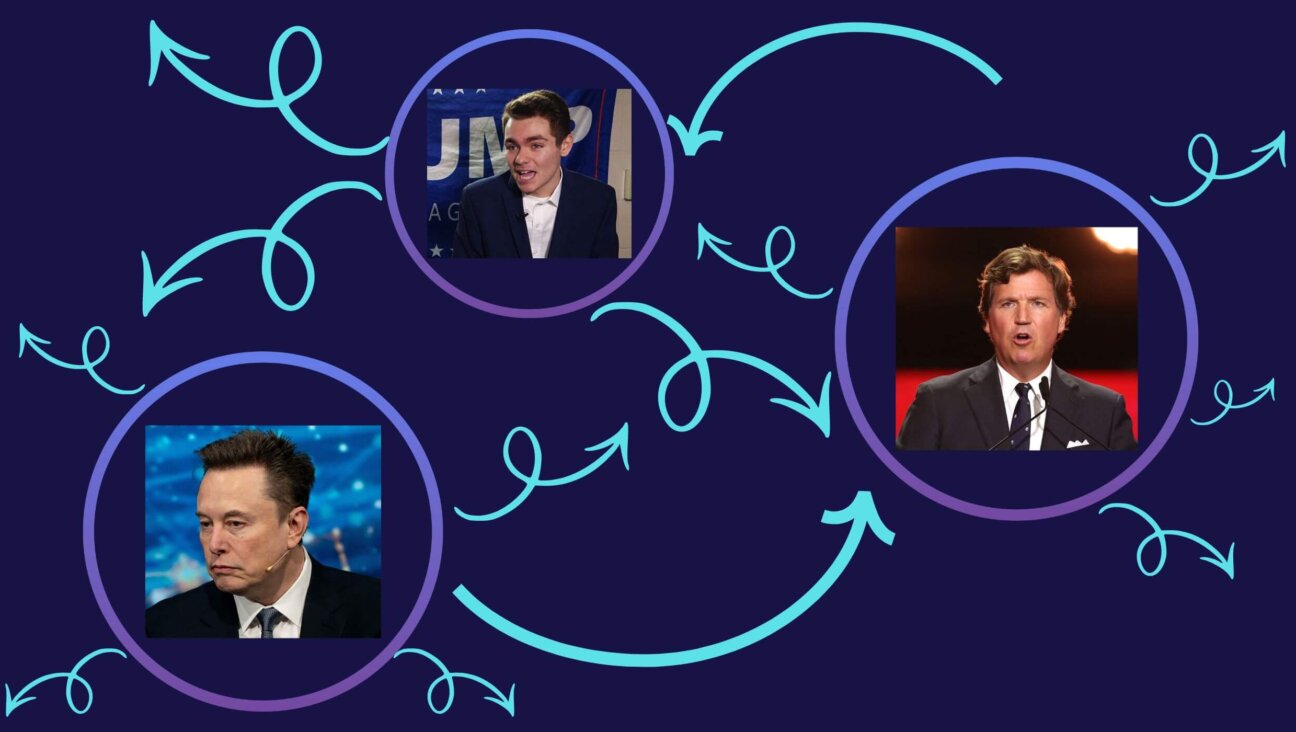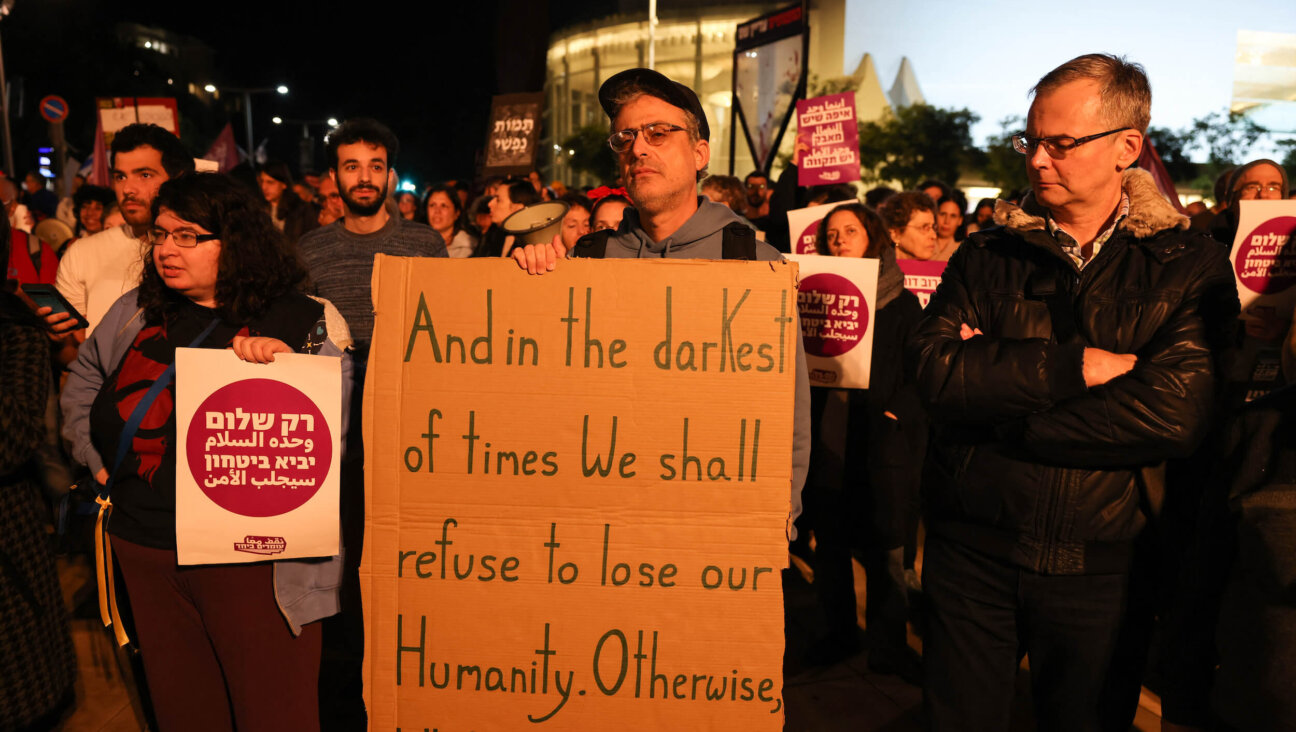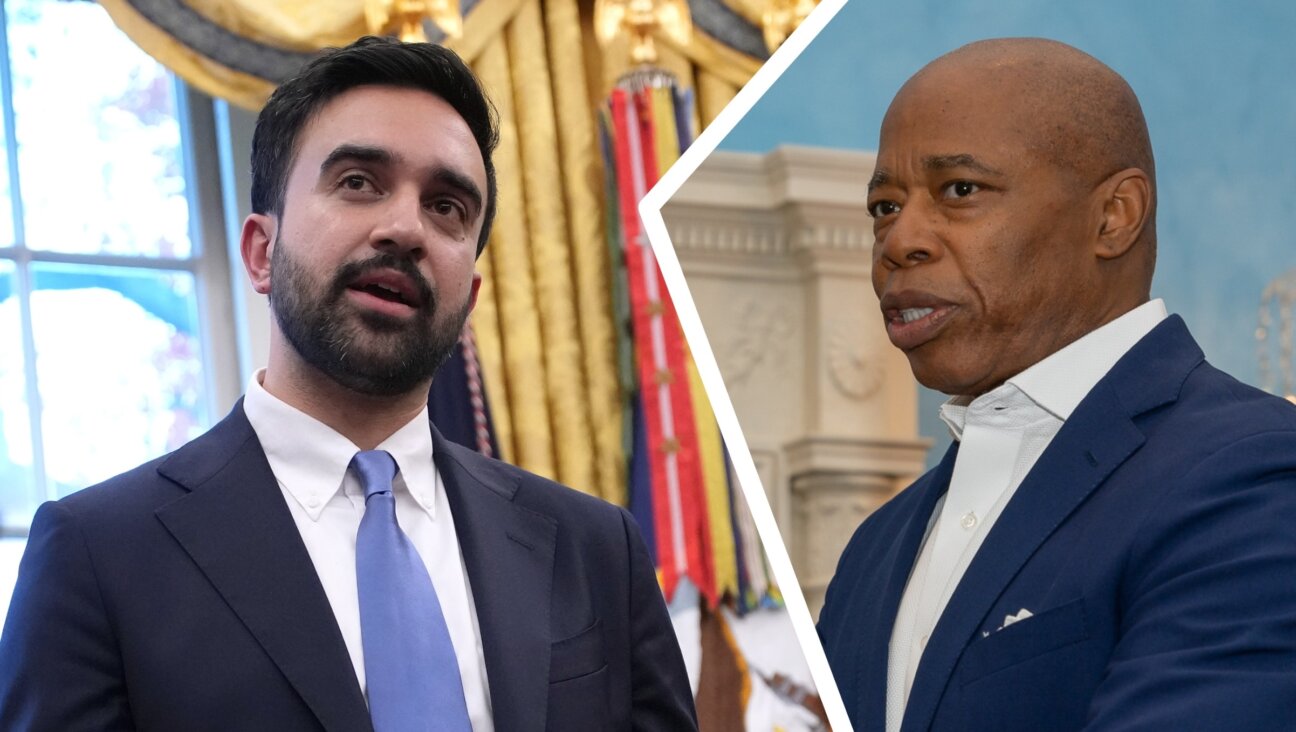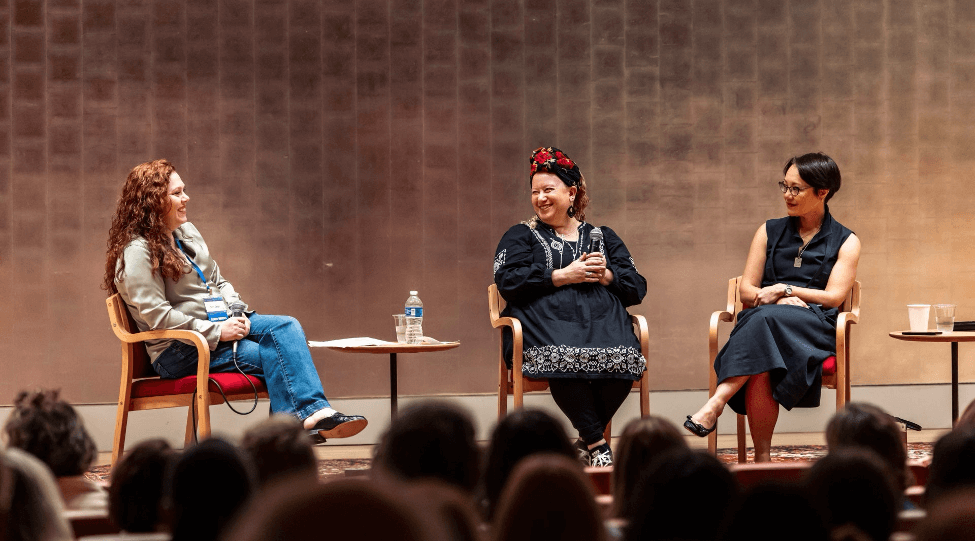As long as there are movies about Nazis, there will be movies about the art they looted
‘Auction,’ which concerns the provenance of an Egon Schiele painting, is only the latest film about Nazi-looted art
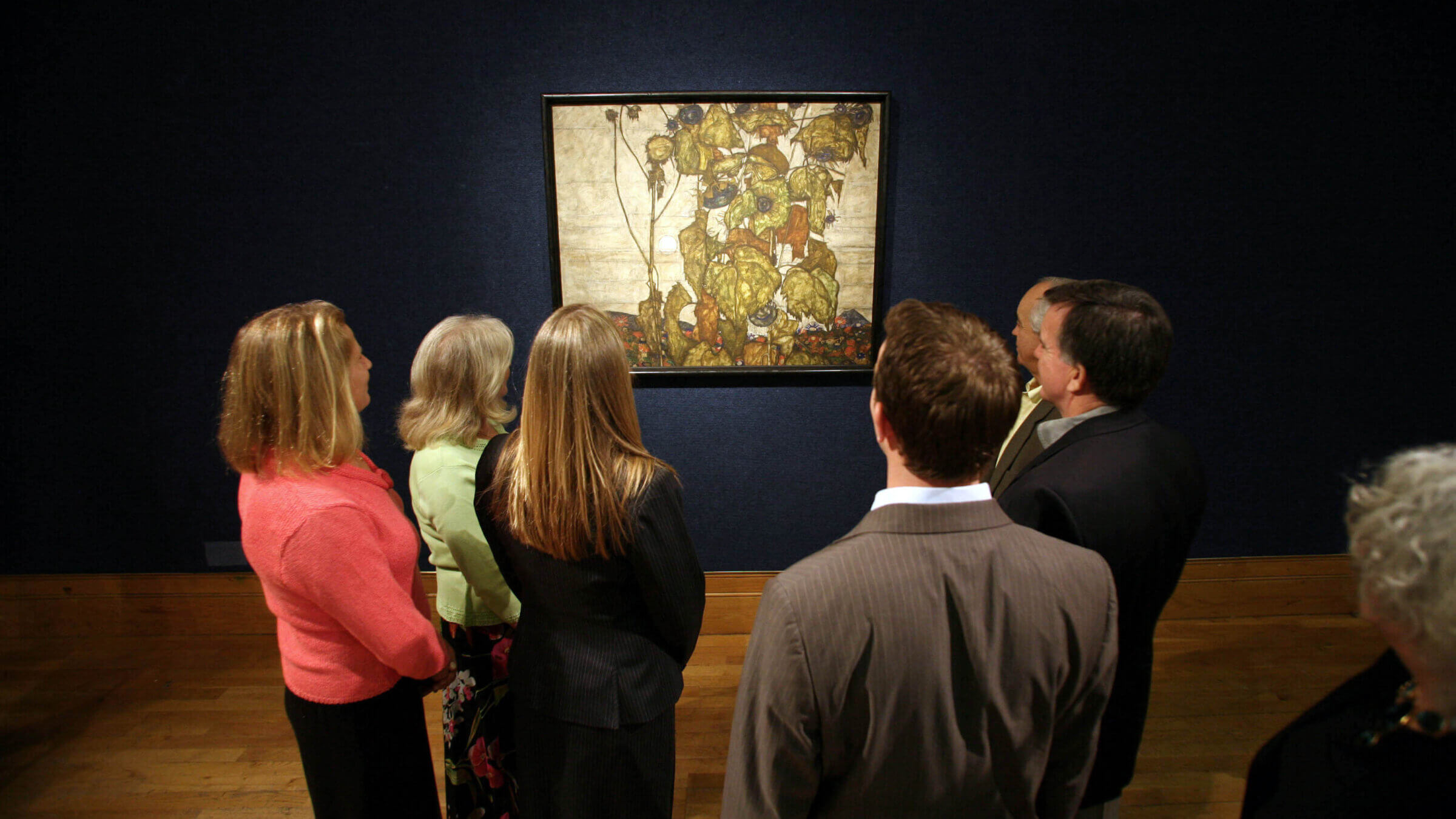
Descendants of Karl Grunwald, the original owner of the Egon Schiele painting, “Sonnenblumen,” study the painting which inspired Pascal Bonitzer’s film ‘Auction.’ Photo by Graham Barclay/Bloomberg via Getty Images
Early on in Pascal Bonitzer’s film Auction, Andre (Alex Lutz), a self-serving and sleazy art dealer, is placating a condescending, cruel, and racist art owner. “You have to stop at nothing for a sale,” he tells his intern.
The French film vividly brings to life the deceptive and hypocritical high-stakes world of prestigious art dealers operating in a Parisian universe of money grubbing and bad faith.

Based on a true story, it recounts what transpired in 2005, when a major work by Expressionist artist Egon Schiele, “Wilted Sunflowers,” was discovered in a home in a suburb of Mulhouse, France.
The 1914 painting originally belonged to the Jewish Austrian collector Karl Grunwald and had last been seen in public at the Jeu de Paume in Paris in 1937. In 1938 Grunwald fled Vienna for Paris, saving as many paintings as he could in a storage unit. They were ultimately looted and auctioned off.
Grunwald made it to America, while his wife and children were killed in concentration camps. For the rest of his life he futilely tried to recover his stolen paintings. Following his death in 1964, one of his sons persevered in his late father’s pursuit.
Bonitzer places the Schiele in the home of Martin (Arcadi Radeff) a highly moral, arguably sentimentalized, young factory worker who has no idea of its monetary value or backstory. Concepts of “provenance” are alien to him; he could use some money and just wants to do the right thing. So do the rightful heirs.
The whole story ends on a positive note as the painting gets sold at auction and the young worker is given an equal share in the sale.
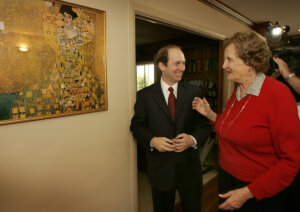
It is estimated that more than 600,000 paintings, decorative items and other aesthetically and culturally valued items were summarily stolen from Jews during the War. Approximately, 100,000 have never been recovered.
Auction is only the latest in a long line of works centering on Nazi-looted art.
Perhaps the best known film in this sub-genre is 2015’s The Woman in Gold, which starred Helen Mirren as the patrician Maria Altmann, who works in tandem with her dogged attorney to retrieve six paintings by Gustav Klimt, one of which was a portrait of Maria’s aunt, Adele Bloch-Bauer I.
The Klimts were ripped off by the Nazis during World War II and exhibited in Austria at the Österreichische Galerie Belvedere until 2006. After a lengthy and byzantine legal battle, a number of the works were returned to the Altmann Family, which sold the Adele portrait for $135 million to Ronald Lauder who proudly displays the work in his Neue Galerie.
It would seem axiomatic that any stolen art should be restored to its original owners or, more usually, their heirs. For some, however, it’s a grayer area filled with moral and legal questions, starting with how the work was obtained. Was it purchased in good faith? If the current owners truly didn’t know its origins should they be allowed to keep it? If not, how much compensation, if any, should they receive?
And, more broadly, who should own great art — a private collector or a museum? Doesn’t the public have a right to see great art? Wouldn’t it be better for a museum to have and display the work rather than a family who may hide it in its basement?
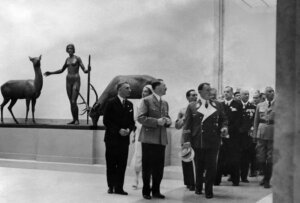
One of the most interesting elements in the “Gold” story, which was also addressed in the documentaries Adele’s Wishes and Stealing Klimt was the Austrian government’s contention that Adele, who succumbed to meningitis in 1925, had in fact left the painting to her husband with the stipulation that when he died it would go to the Austrian gallery. Therefore it was rightly theirs.
But if the will existed — and that was debatable — was it legally binding since Adele’s husband was forced to flee the country in the wake of Germany’s annexation of Austria, which Adele had no way of anticipating? Her will, if there was one, was predicated on the idea that he would die at home and that his art collection would remain intact and in his possession when he passed.
The Rape of Europa, a comprehensive and detailed documentary on pillaged art also touches on the dilemma surrounding Adele’s portrait, but it places the crime in a wider context, considering the questions that emerge when one country or culture appropriates the art of another. Still, it makes clear that the most egregious example is the Nazi seizure of Jewish art.
Much of the art in question, modern, abstract and acclaimed by the likes of Picasso, Kandinsky, Klee, largely owned by Jewish collectors, fell into the category that Hitler dubbed “degenerate,” which gave him the opportunity to further dehumanize those owners. Most of the paintings were destroyed while others were sold for enormous profits in order to underwrite a massive build up of armaments for the Third Reich.
The documentary, The Portrait of Wally, is a searing indictment of MoMA and other major American art institutions that supported MoMA in a less-than-exemplary 1997 episode.
The film recounts the brouhaha surrounding Egon Schiele’s painting of his mistress Wally, owned by Lea Bondi, a Jewish Austrian art dealer before it was grabbed by the Nazis in 1939.
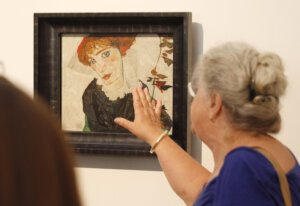
Prior to landing at MoMA it was housed in Rudolph Leopold’s Austrian museum. Leopold was a classic double dealer, pretending to be on the side of the original owners and their heirs when in fact he had no intention of handing over the painting.
But when the painting was on loan to MoMA, the Bondi heirs demanded that it be returned to them. Rudolph refused, which led to a 13-year criminal investigation launched by New York District Attorney Robert Morgenthau, during which time the painting was held by the United States government.
According to the film, MoMA and other art institutions sided with Rudolph because they were afraid that aligning themselves with the Jewish family would mean that museums across the globe would no longer lend their works to American museums for fear that they might potentially lose their art or have to pay big bucks to have it returned.
Ultimately in 2010 the Bondi heirs prevailed. The Leopold Museum paid them $19 million for the painting’s return. That case succeeded in opening the floodgates to many others. And a surge of films on the topic followed.

But movies centering on Nazi-looted art have been around for decades, such as John Frankenheimer’s 1965 action thriller The Train starring Burt Lancaster; and 39 years later George Clooney’s The Monuments Men, both loosely inspired by factual events.
Set in 1944, shortly before the end of the war, The Train is a suspenseful and well-acted account of a French resistance fighter (Lancaster) determined to intercept a train carrying Nazi looted art from France to Germany without destroying the art.
Set in the same era, the starry Monuments Men, co-written and directed by George Clooney and featuring Clooney, Matt Damon, Bill Murray, and Cate Blanchett, among others, depicts a unit of historians and archivists on a mission to locate and salvage works of art across Europe before the Nazis had a chance to steal and destroy them.”
Despite the caliber of talent involved, the film was seen as problematic because of its failure to point out that many, if not most, of these art works had belonged to Jews and were brutally confiscated from the original owners, many of whom had been carted off to concentration camps to be killed.
Clooney and his Jewish co-writer said that their purpose was to explore not the experience of any one group but the profound significance of great art and the violation that’s perpetrated when it is stolen, or worse, destroyed.
Both Clooney and Frankenheimer’s films also touch on the moral quandary of whether a great painting is more valuable than a human life. If the risk to save the art is that high is it worth taking?

For me the most affecting film on lost art is Elizabeth Rynecki’s 2018 documentary Chasing Portraits, her freshman endeavor. Even though — perhaps precisely because — at times it feels more like a home movie than a professionally honed flick it reveals an emotional core that is unexpectedly moving.
Equally relevant, her film centers on paintings that were scattered after the War. They may or may not have been looted, but their fate was directly tied to the Nazi regime that forced Jewish residents to escape without their precious belongings.
Rynecki grew up surrounded by the art of her great-grandfather Moshe Rynecki, who was murdered at Majdanek in 1943. His evocative expressionistic works portray the day to day life of Polish Jews prior to the Holocaust. Of his estimated 800 works, 120 remain in Polish and Israeli museums and private collections abroad.
Throughout her life Rynecki had wanted to see these works, not to reclaim them, but to uncover how they ended up where they were. She serves as a historian and witness, her great grandfather’s art a link to her family and Jewish heritage and a world that is gone forever.
The film follows her as she travels from Canada to Poland and Israel where she is, by turns, regarded with suspicion or more usually snubbed outright. Many owners, some Jewish, cannot believe that she is not there for restitution. In one of the strongest scenes, a Polish collector, a gentile, wraps up and hands over to Elizabeth one of her great grandfather’s paintings, unsolicited.
It’s a story that lingers and will no doubt continue to inspire more documentaries and feature films. Just this week, The Guardian reported that the heirs of a Jewish couple are suing The Metropolitan Museum of Art in New York over a Vincent van Gogh painting they say was plundered by the Nazis.
The film Auction is currently screening in New York at Film Forum.
